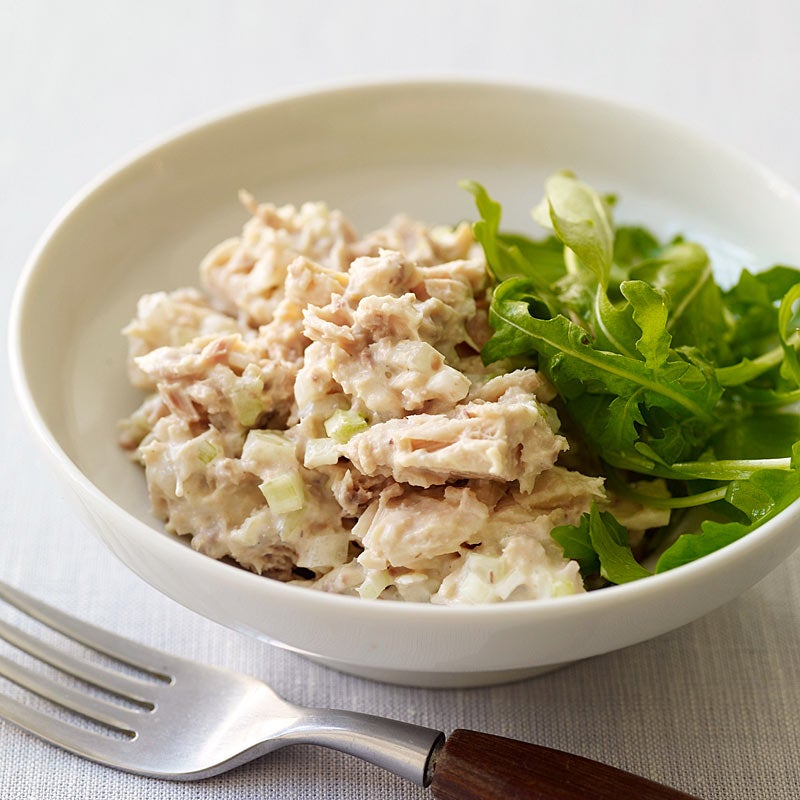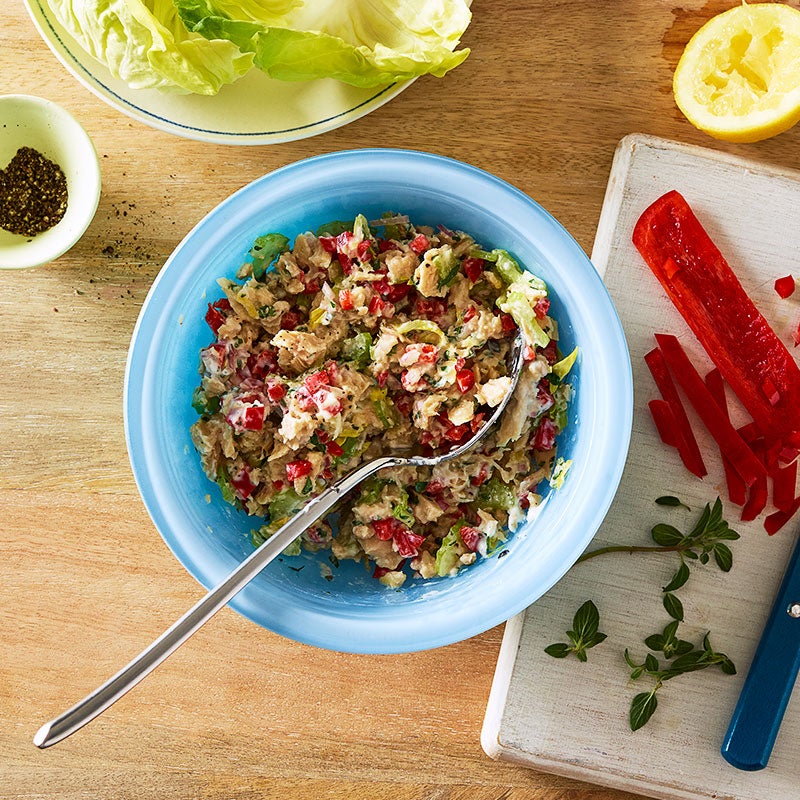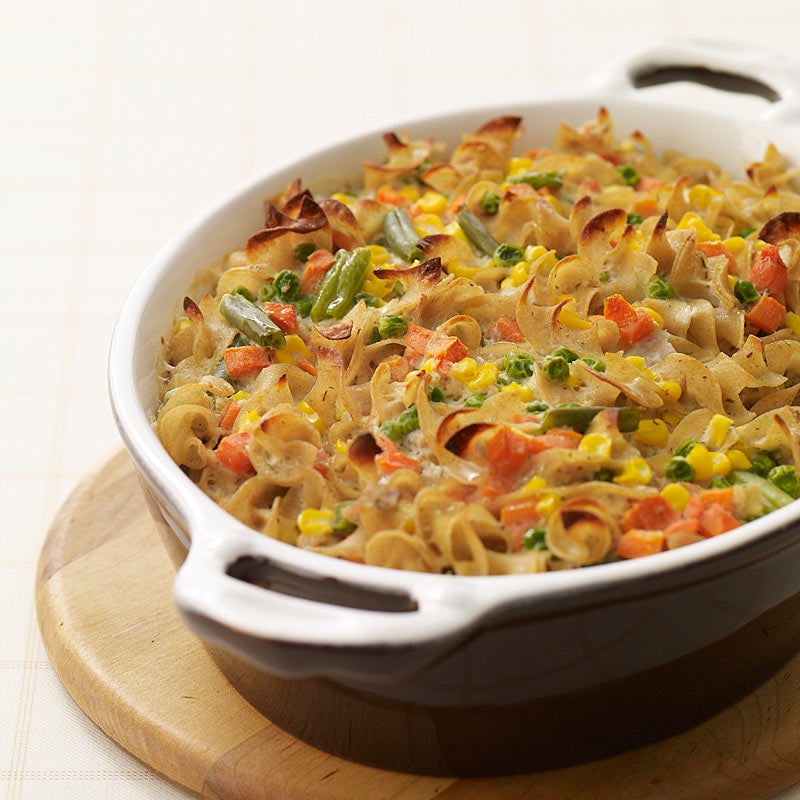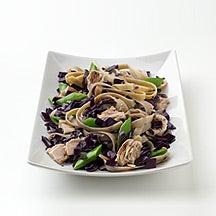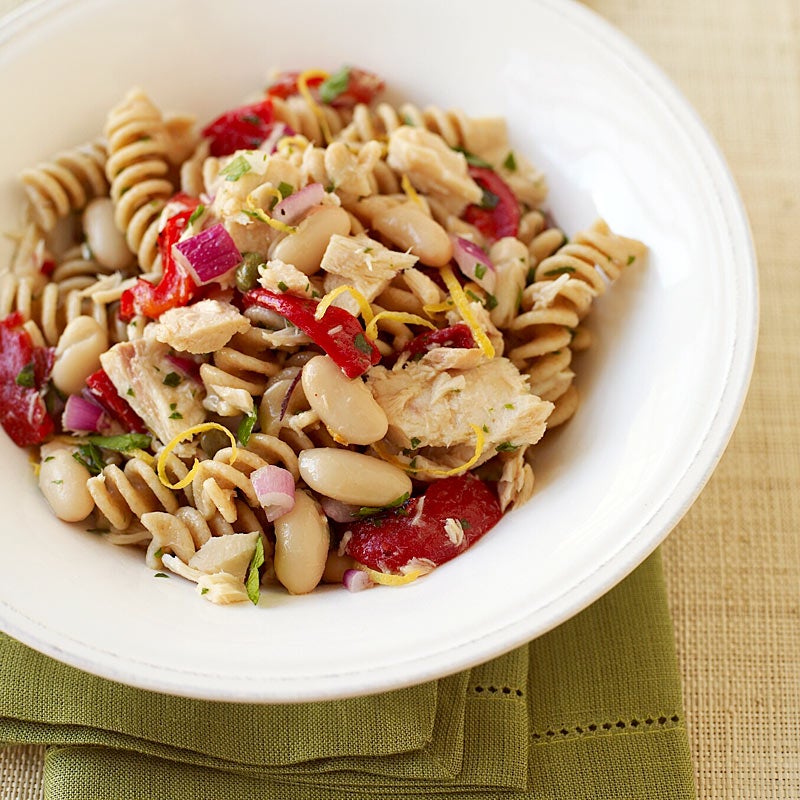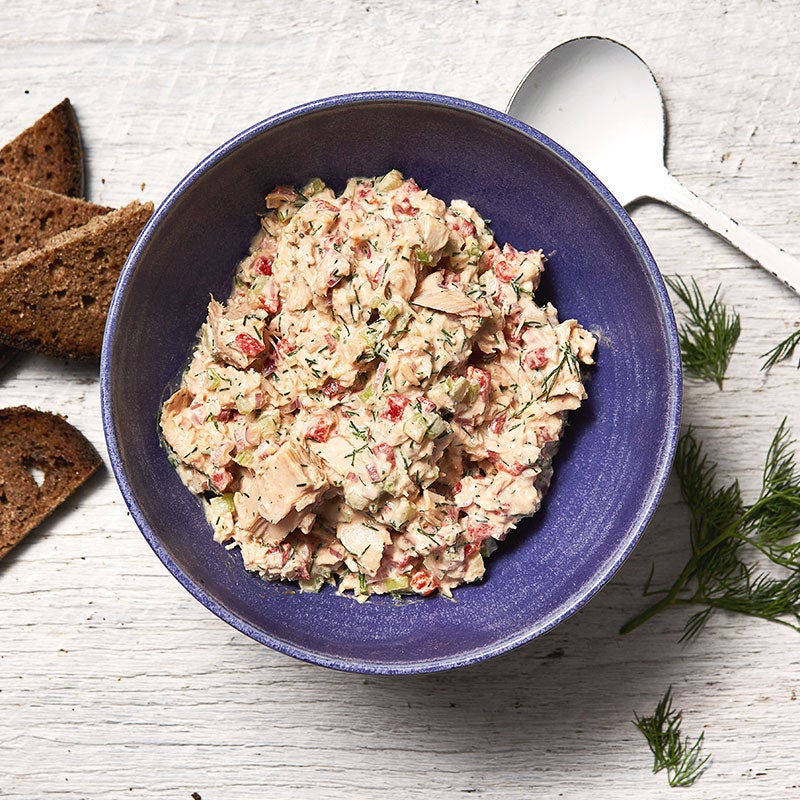Reasons to Love Canned Tuna
Get the 411 on this versatile, convenient, and delicious pantry ingredient

Between its low cost and tremendous health benefits, canned tuna is a pantry MVP. It can be served hot or cold, in good old American dishes like tuna-noodle casserole and international favorites like Niçoise salad or vitello tonnato (that's veal in tuna sauce, an Italian classic). And let's not forget the ever-popular tuna salad sandwich!
The real beauty of protein-rich canned tuna? It stays good almost forever. For the best flavor, use within 3 to 5 years—but toss any cans that are dented, leaking, bulging, or rusted. Once a can is opened, transfer leftovers to a covered container and refrigerate; use within 3 to 4 days.
But first, a note on mercury. The toxic substance is found in nearly all fish, but levels become dangerously high in large species like tuna. Albacore "white" tuna is higher in mercury than canned light tuna. Currently, the FDA recommends limiting canned tuna consumption, especially for children and women of childbearing age. Specific recommendations can be found on the FDA's web site.
What you need to know about canned tuna varieties
In most supermarkets, you'll see a dizzying array of options for canned and jarred tuna—ever the more reason to use your barcode scanner! Here's the scoop on the most common varieties:
Solid white
In the United States, only albacore, a single variety of tuna, may be called "white." When you open a can, you'll see large pieces of firm, white flesh. Expect a mild, almost bland flavor. White tuna contains more heart-healthy omega-3s than chunk light, but it also has more mercury, so it should be eaten less frequently.
Best if:You hate fishy flavor.Chunk light
Usually skipjack or yellowfin tuna, chunk light has a darker, flakier appearance and a more pronounced fish flavor.
Best if:You want to eat tuna more often. It's lower in mercury but still offers some omega-3s.Packed in water
The lowest-calorie option, but be aware that there's more than just water in the can. Vegetable broth is often included to add flavor, and it also adds sodium. Read labels carefully if you're watching your intake.
Best if:You're watching your calories.Packed in oil
Oil adds fat and calories, but many say it's worth it for the richer texture—drained tuna packed in water can be quite dry. Look for tuna in olive oil to get the best flavor.
Best if:You prefer a rich texture.Packed in its own juices
A newer, pricier option, this may be hard to find. Unlike other varieties, which are cooked, then packed, then cooked again, this tuna is cooked just once, in the can. Don't drain it; there's a lot to savor in that liquid. Many brands use albacore, but because they only use smaller fish, the mercury levels remain low.
Best if:You're seeking a clean, true tuna flavor (and are willing to pay a bit more).Pouch:
Another newer choice, taste-test results are mixed. Like canned, pouches come packed with water or oil.
Best if:You prefer a fresh taste and firmer texture.Jarred:Usually imported and priced at a premium, this is the most deeply flavorful tuna—you'll enjoy this straight from the jar. Most varieties are packed in olive oil.
Best if:You plan to eat your tuna straight up rather than in a tuna salad.
